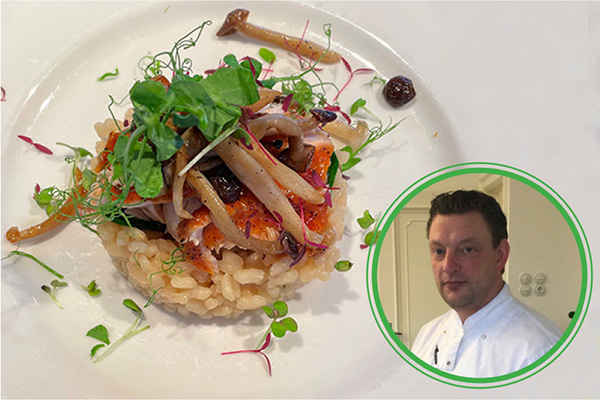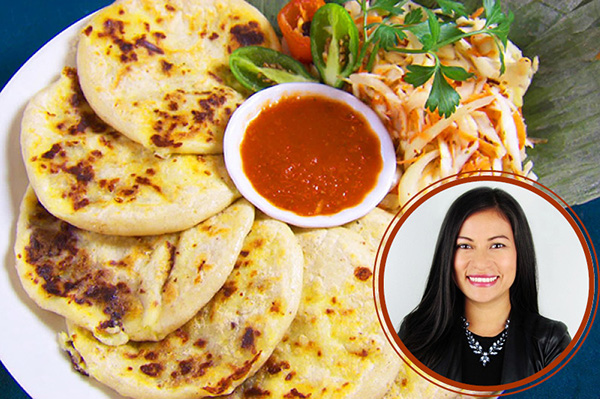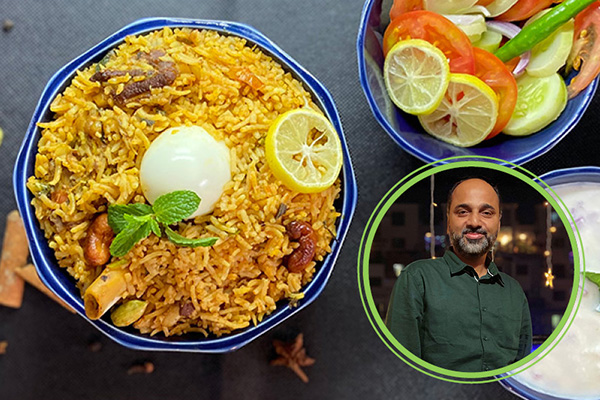Food has a culture. It has a history. It has a story. It has relationships.
― Winona LaDuke
At SAS, our culture is formed by celebrating backgrounds, experiences and perspectives from colleagues in 59 countries around the world. Since work should be a place where people can be themselves and feel included and understood, enjoy this two-part insider’s look into dishes that hold a special place in the lives of some of our SAS employees. And check out the second installment of this series for more tasty recipes and fascinating backstories.
What a tasty way to “celebrate a world of flavors” while nourishing ourselves, appreciating our diversity and trying new foods and flavors!
Celebrate a World of Flavors with this insider's look into special dishes from some of our @SASsoftware employees around the world. #saslife #NationalNutritionMonth Click To TweetScoop Salmon
Paul Vink, SAS Netherlands
I used to live in a former fishing village, Bunschoten-Spakenburg, in the Netherlands where “scoop salmon” is very popular. The village was on the former Ijsselmeer. Before the Afsluitdijk dam was built, people fished on the Wadden Sea and Ijsselmeer with authentic wooden boats called botters.
This dish is traditionally made with Schepzalm, salmon that is hot-smoked on the skin in a smokehouse, preferably with oak and beech wood. Because it is hot-smoked, you cannot cut it and you have to scoop it — hence the name.
Scoop salmon is a favorite dish in the lunchroom of SAS Netherlands. The salmon is very versatile and can be combined with a baguette, served on a salad or paired with risotto and mushrooms.
Authentic Salvadorean Pupusas
Caroline Galdamez, SAS Canada, sharing a dish from El Salvador
Pupusas are similar to a flat bread that is made with corn flour (masa) and filled with delicious cheese and beans or meat. Pupusas are a traditional dish from El Salvador and they’re cooked on a hot griddle and often served with curtido and salsa.
These remind me of home! They are also a reminder of the strong and compassionate women in my family. My grandmother had a Pupuseria (restaurant where they serve pupusas) for many decades and built her entrepreneurial knowledge from scratch while also teaching other women in our family about business, cooking and making a true impact on your customer's lives through relationships.
Biryani
Krishnakumar C, SAS India
The origin of the word biryani is a bit hazy, but most food historians agree that it was derived from either birinj, the Persian word for rice, or from biryan or beriyan, which means "to fry" or "to roast.” Similarly, the origin of biryani also leads to heated debates among food historians. Some believe it originated from Persia and was brought to India by the Mughals who used it as a war time food (it is a single pot meal that can be made in large quantities and preserved for days) and then developed in their royal kitchens to serve to Kings. Another theory is that biryani was brought by Arab traders who arrived as merchants to the Malabar coastal region of Southwest India.
Whatever the origin, biryani, like many aspects of Indian culture, has been adopted and has become native. Today, it's not an exaggeration to call it the national dish of India; biryani is after all the most ordered dish from food delivery platforms with 115 biryanis delivered per minute on one single platform in 2021!
When you travel across India, you’ll find many varieties of biryani, with the taste, style, spices and rice varying from one region to the next. The magic of biryani is in the way the already fragrant rice fluffs up with the juices from the meat and spices as they are cooked together. Rice is at the heart of this dish and certain chefs refuse to make biryani if their preferred brand of rice is unavailable! Biryani is further defined by the type of meat used to flavor the dish. For purists, it’s always mutton (goat meat – preferably the tender cuts of a goat’s shoulder) but chicken, fish or prawns are a welcome change.
Cooking is not a craft, but an art, driven by instincts and a sense of flavor of the cook. Therefore, there are no strict rules in the preparation of biryani, but the basic principle is to keep it simple and use the right blend of spices to support the biryani story without overpowering the dish. Other guidelines to keep in mind include:
- The meat and vegetables need to be fresh.
- The rice needs to be of a fragrant variety.
- The meat needs to be marinated in spices and yogurt for at least 30 minutes and the rice needs to be soaked in water for at least 15 minutes.
- The finishing process of dum (slow cooking in a sealed vessel) is essential as well as the use of coriander and mint.
- Depending on the region, accompaniments will vary but the coolness of raitha (a yogurt-based condiment) is often sufficient to balance the spice of the dish.
- Serve biryani hot and steaming. The aroma is sure to envelop your home and your guests!
If you’re on campus at SAS World Headquarters in Cary, NC, stop by the café on Wednesdays in March to experience some of these dishes firsthand. One dish will be featured each week, at rotating cafes. Check the café menu each week to see which global dish will be featured. Spoiler Alert: You can enjoy Paul’s Scoop Salmon today (3/9) and Krishnakumar's Biryani next week (3/16)!
- Wed, March 9: Overlook Café in Building T
- Wed, March 16: Atrium Café in Building R
- Wed, March 23: Overlook Café in Building T
- Wed, March 30: Atrium Café in Building R




